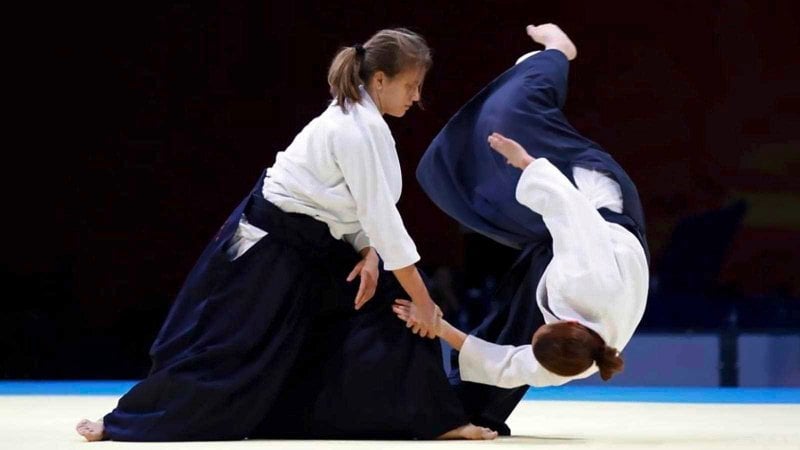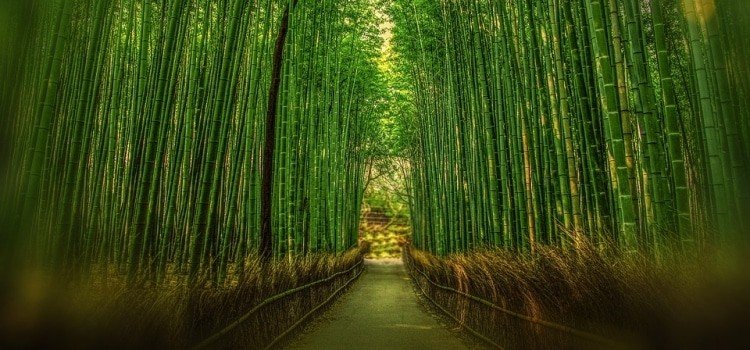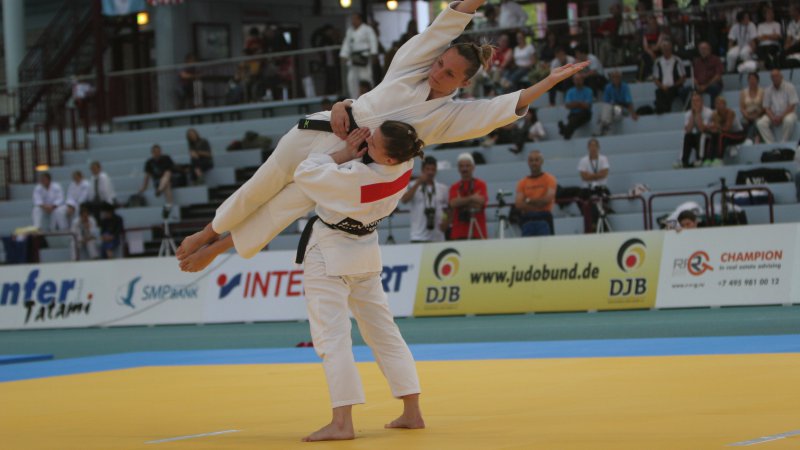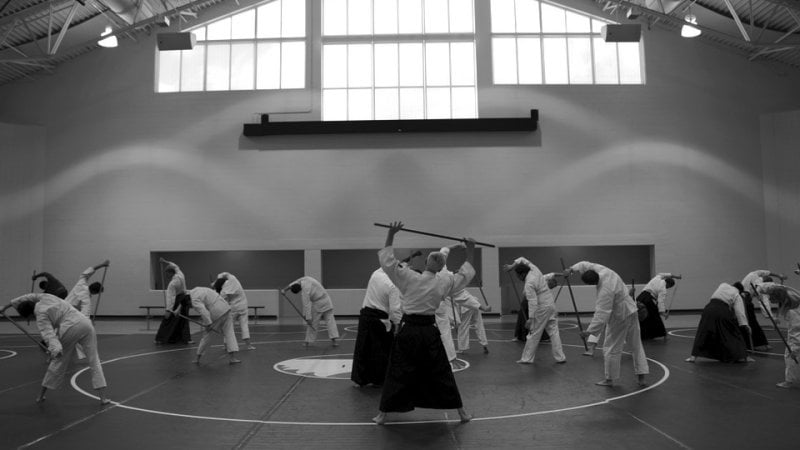Aikido is a Japanese art that translates to "the path of unification with the energy of life", or "the path of harmonious spirit". In this article, we will talk about the martial art aikido and its curiosities.
Let's talk about the origin of aikido, what aikido is for, what are the correct ways to use aikido, among other different types of explanations about this Japanese martial art. The summary below will help you navigate:
Table of Content
What is aikido?
Aikido or aikido [合気道] is a martial art created in Japan after the 2nd World War, by the master Morihei Ueshiba in between 1883-1969. This martial art consists of the principle of harmony between practitioners and the universe.
In all martial arts, fighters must win or destroy the enemy, because they were developed and passed down through generations, by ancient Samurais and their experiences in battle.

Unlike fighting techniques, aikido uses a combination of techniques and the opponent's strength to harm himself. Therefore, aikido consists of using the opponent's strength against himself.
One of the advantages is that these abilities allow the fighter to exit a violent battle without taking damage by simply using his strength or other attack techniques.
the founder of aikido
To understand more deeply about Aikido, we need to know the history of Morihei Ueshiba, the founder of the martial art aikido, who was also called the Great Teacher (oosensei -[大先生]).
In the year 1919, Morihei Ueshiba met Onisaburo Deguchi from the sect Omoto-kyu, who taught a spiritual technique called Chin Kon Kishin, through focused meditation, increasing his serenity and leaving him more relaxed, reinforcing in him the concepts of harmony.

Knowing that there could be no harmony in his battles, Morihei Ueshiba began to create concepts of his own Martial Art, where there was no goal to defeat or destroy an enemy, but rather to end a conflict.
So he opened a little school called “Escola Ueshiba” in 1923, he named his martial art Aiki Bujutsu, and started traveling around Japan teaching others his incredible skill that quickly spread and became popular.
what does the word aikido mean?
The word aikido is formed by three kanji ideograms:
The term Ai [合] means Harmonia which refers to the characteristic of Aikido that to control your opponent, you need to become one with them, so that as a single unit, you end up dominating your opponent.
The Ki [気] means the Energy used in the act. It is a universal energy, existing in things, which the concept that anthropologists call animism.

The Do [道] means the Path, in the sense of a path in search of personal and spiritual evolution; it has the same meaning as Tao, in Taoism. The do [道] often accompanies the name of other martial arts.
The term AIKI [合気] refers to the beginning of the fight, where one absorbs the movement of the attackers to control their actions with little effort.
aikido characteristics
In aikido, just like in practically all Japanese martial arts, training is based on physical and mental exercises. The physical training in aikido encompasses both fitness and physical conditions as well as preparation and training of specific techniques of the martial art.
One of the other characteristics of Aikido, also characterized as a Budo, is to enhance one's personal and spiritual form through wisdom and experience in it.
When a fighter is confronted, he has to dodge his opponent's blows as much as possible so that he doesn't get hurt too much in his daily battles or in his day to day defenses

The idea of this principle is to never oppose the opponent's blow or effort; if he pulls, push; If he pushes, rotate your body, in both cases, to use your opponent's momentum to your advantage.
Another characteristic of Aikido is that it prioritizes peaceful solutions to conflicts, it is always better that demands are not resolved through combat, but through dialogue. This is important for both the inner [inner conflicts] and outer [outer conflicts] plane.
Another characteristic of Aikido is that this martial art is not used for combat or confrontation but for self-defense, so if you are looking for a martial art to use in your combats, it is better to get another type of martial training, but if you If you want to learn to defend yourself, aikido is the right art.
Distinguish the physical from the spiritual world
The ancient masters taught that warriors made no distinction between the physical and spiritual worlds, their technique was elegant and refined, as was their spirit; therefore, giving his maximum in training to improve and improve his technique, the practitioner also improved his spirit.
But he manages to control himself not only in confrontations that require physical effort, but also in the difficulties and setbacks that occur on a daily basis, he starts to trust even more in his efficient self-defense techniques.
Thus, in Aikido, there is no competition, attacking blows, or any other type of manifestation of aggression or violence, but in fact, the learner manages to control his aggression, making him calm, patient and balanced at any time.
How did aikido arrive in Brazil?
Aikido arrived in Brazil on January 9, 1963, through the intermediary of Shihan Reishin Kawai, 8th Dan of Aikido. His disciples affectionately call him “Kawai Sensei”
He founded the South American Union of Aikido, being a teacher of the classes at the Central Academy that he built himself. Over time, the art spread throughout Brazil and became one of the most popular in the country.

This entity turned out to be one of the largest current organizations with Dojos throughout Brazil, Peru, Uruguay, Argentina, Denmark and Spain.
What is aikido training like?
The aikido training is mainly based on the participation of two partners who practice specific movements. The pattern consists of sequences of attack movements performed by the uke.
Uke [受け] means receiving body, the recipient of the technique, who usually initiates an attack against his rival who applies the technique.
The rival who applies the technique is called a tori [取り] which means grabber or shite [仕手] which means performer. When a throwing technique is performed, he can also be called a nage [投げ] which means thrower.

One of the workouts that are part of aikido develops the BODY with physical activity for the movements of the techniques in an aerobic way, however, muscle strength is needed.
It is also necessary to develop the MENTE by promoting concentration, perception, discipline, respect, and self-confidence.
It is also necessary to develop the ESPÍRITO, creating within oneself honor, gratitude, emotional balance, peace, and finally harmony.
14 rules used in aikido
There are 14 rules used in aikido that we can take into account, they are:
- 1-Maintain Discipline;
- 2-Don't get upset;
- 3-Don't be sad;
- 4-Do not have hostile feelings;
- 5-Be understanding and tolerant;
- 6-Be calm;
- 7-Be peaceful;
- 8-Maintain ethics;
- 9-Make friends with everyone;
- 10-Respect God and people;
- 11-Be humble;
- 12-Be fair and honest;
- 13-Become aware that Aikido is one of the paths that leads to God;
- 14-To become aware that the practice of Aikido has the principle of self-knowledge;
the great masters of aikido
To end the article, we are going to list some aikido masters for you to research. I hope you enjoyed the article, if you liked it share and leave your comments.
